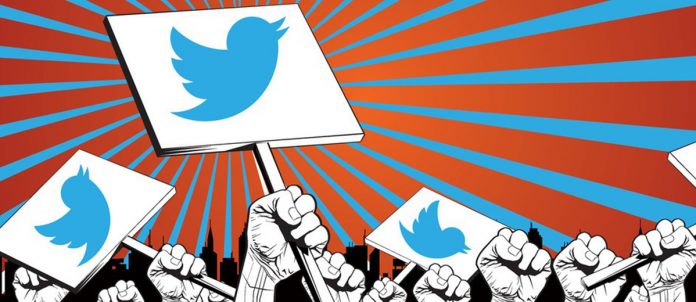By Hussain Dada
For a long time, the recurring taunt thrown at those supposedly pontificating about Pakistan’s problems from within the comfort of their drawing rooms was ‘Arm-chair Activists/Revolutionaries’. People who were affluent, foreign returned and spoke in accentuated English were typecast as such, regardless of whether the issues addressed and solutions suggested had any value.
The tendency to paint everyone with the same brush is a recurring theme. All politicians are corrupt. Every cop can be bribed. If one is a cleric, he must have molested someone. And if you speak in grammatically correct English, then you are a Slacktivist!
Slacktivist, according to the Urban Dictionary is “a person that does simple things like change their avatar color or post a status update about a cause instead of actively supporting the cause.” This definition emanates from the Western world, but events like the Arab Spring or the Occupy Wall Street protests fly in the face of such negative assumptions. The organizing power of the web provides a unified platform to disparate voices.
Furthermore, the numerous online movements, Avaaz.com being one leading example, demonstrate the potential of such platforms for people-powered advocacy and involvement in decision-making. Close to 20 million endorsed the ‘Welcome Palestine’ campaign, on the eve of its recognition by the UN as the world’s 194th state.
Closer to home, Malala Yousufzai shot to global stardom – literally, the 15-year old was targeted by militants for advocating education – and garnered enough support for the government of Pakistan to launch a stipend program for 3 million children.
But not all is rosy in the world of social media. For every Ice Bucket Challenge, there are a thousand and one causes that would be outlasted by a soap bubble. The reasons could be many: A lack of systematic approach, sporadic outbursts of energ and absence of structures and hierarchies to name just a few.
Just like the 24-hour news cycle is the shelf life of any story that begins as ‘breaking news’, multiple issues raised on social media are destined to die a premature death. Furthermore, the dynamics at work in Pakistan mean that the issues and views dominating social media represent a very small sample of the population, thus presenting a skewed narrative. SLACKTIVISM IN ACTION
The case of Shahzeb Khan would go down as a watershed in the history of social media. Young Shahzeb was shot dead over a minor argument by the son of a feudal. The mainstream media – both print and electronic – didn’t take up the story, but it found an outlet on social media. Facebook and Twitter were bombarded with demands for justice, and protests and vigils were held.
The local media only ran the story after it was picked up by international media. Judicial initiative meant that the law enforcement apparatus had to take action. Shahrukh Jatoi, who had fled the country, was repatriated, and faced trial. He and his accomplices were sentenced. Even though the accused were released after being pardoned by the victim’s parents, it established social media as a credible platform for giving voice to the nameless, faceless majority. It enables its users to bring together that critical mass necessary for policy-level action.
But in a country where over a dozen people die on a daily basis in at least one major city, abductions are common place, massacres are carried out in the name of national security; social media has failed to build up on its historic achievement.
With the majority of the victims coming from the majority of the population that is illiterate, often without access to technology and unable to navigate the web; social media is equivalent to alien life. Those who dominate Twitter belong to a very small minority, a veritable niche with access to all the luxuries that life has to offer.
Maybe that is why that when the relatives of a former prime minister beat up their servant for breaking a vase, social media is abuzz with demands for justice. The death of an Ahmadi reminds everyone about the importance of minorities. But there is little in terms of follow-up and concrete action.
Sadder still, relative longevity is enjoyed by side issues like the viral video of an ex-senator being hounded from the airplane by irate passengers forced to wait due to his late arrival; or the leaked footage of a televangelist using vile language with his guest when off-air during a shoot.
But, like the nation, this medium is also in its infancy – yet to go through the Freudian stages of maturation. Nonetheless, its importance, outreach and influence are not lost on those in the corridors of power. Most politicians now have a social media team, with Twitter serving as a manifestation of the ‘open-door’ policy that they advocate – even if not in spirit.
In the current situation, Imran Khan continues to be all the rage on Twitter. If there’s a PTI-related event, rest assured, the top trending hashtags (#) in Pakistan would have either PTI or IK, sometimes even both. His followers continue to increase, currently in excess of 1.5 million. Both Pervaiz Musharraf and Dr Tahir-ul-Qadri have around 200,000 followers. #GoNawazGo is probably the most popular hashtag to emerge from Pakistan, at one point reaching as high as 0.20% of the overall Twitter traffic, easily among the top 5 hashtags globally at that point.
The fact that both Tahir-ul-Qadri and Imran Khan are using social media, despite having support bases with diametrically opposed outlooks and demographics, shows that social media’s role is only going to grow.
Social Scientist Malcolm Gladwell, in a highly controversial article ‘The Revolution Will Not Be Tweeted’, wrote off social media as a source of activism. For him, the engagement and ownership intrinsic to attending a rally, facing batons, undertaking danger or experiencing is absent when one’s participation is from behind the computer screen from the confines of one’s room. Gladwell’s hypothesis has its own merits and demerits.
But in a country like Pakistan, where apathy is widespread and grass-root level movements’ non-existent, social media provides a unifying platform for disparate voices to find the commonality of purpose. It also engages females, otherwise marginalized due to social constraints. Plus, it offers the safety from extremely real dangers from violence to suicide attacks. More importantly, it gives the youth, the biggest chunk of the population, real belief that they are becoming part of something bigger, with the opportunity to provide solutions instead of bemoaning the many ills that afflicts the land.
Being a two-sided coin, social media will provide opportunity to all those who want to avail it. This means that there would be as much raising of voice as there would be noise. All one needs is an ear that can distinguish.
Hussain Dada is a freelance journalist currently working in the development sector.
He can be reached at hydada@gmail.com.














